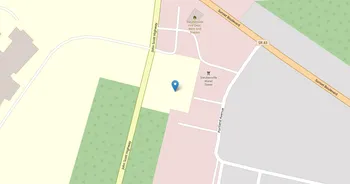Hobart Institute of Welding Technology (HIWT) : Overview, Courses, Scholarships & Rankings
About Hobart Institute of Welding Technology
In Troy, Hobart Institute of Welding Technology is known for learning that happens with a hood down and sparks up. Instruction leans heavily on hands-on practice backed by clear theory, with attention to safety, materials, and quality. Purpose-built labs, well kept booths, and shop-floor spaces shape the daily rhythm. Students find straightforward help too, from advising and tutoring to practical guidance on gear and technique. The culture is focused, friendly, and no-nonsense. People know why they are there.
Life outside class tends to revolve around practice sessions, peer meetups, and quick trips into downtown for coffee or a bite. The Miami Valley adds parks, trails, and small-town hangouts when you need to clear your head. Career preparation has a strong reputation, with coaching on resumes, interviews, and industry credentials, plus connections to regional manufacturers and contractors. What sets Hobart apart is its single-minded focus on the craft and a deep, steady place in American welding education.
Key Institutional Details
Contact & Profile
Academic & Institutional
Academic Programs & Fields of Study
Hobart Institute of Welding Technology (HIWT) offers 1 degree programs across 1 major academic fields, graduating approximately 297 students annually. The most popular fields by graduate volume are Production (1 programs, 297 graduates). Explore program details, award levels, and graduate demographics below.
Production (1 programs, 297 graduates)
Manufacturing Technology, Quality Control and Industrial Arts
| Program Name | Graduates | Gender Distribution | Award Levels | CIP Code |
|---|---|---|---|---|
| Welding Technology | 297 |
|
Certificate (1-2 yrs)
Other Award
|
48.0508 |
Tuition, Fees & Estimated Costs
Overview of tuition rates, housing, and other annual education expenses for undergraduate and graduate students
Financial Aid & Student Support
Summary of scholarships, grants, student loans, and financial aid statistics for undergraduate students
Student Success Metrics
Graduation rates and post-graduation earnings to help assess student outcomes and long-term value of education.
Loan Burden & Repayment Outcomes
Breakdown of loan repayment rates and student debt levels by income and dependency status.
Frequently Asked Questions
Find answers to the most common questions about Hobart Institute of Welding Technology (HIWT)
What academic programs and degree levels does Hobart Institute of Welding Technology offer?
Hobart Institute of Welding Technology (HIWT) offers 1 academic programs across 1 major fields of study, with available degree levels: Certificate (1-2 yrs), Other Award.
Most popular program areas include:
- Manufacturing Technology, Quality Control and Industrial Arts (1 programs)
Data based on IPEDS program completions for 2023-2024 academic year. Numbers reflect programs where students graduated, not all offered programs.
What financial aid and scholarships are available at Hobart Institute of Welding Technology?
Hobart Institute of Welding Technology (HIWT) provides financial aid to 84% of first-time, full-time students, with average grants of $6,095 and average loans of $7,282.
Average financial aid amounts by type:
- Pell grants: $4,386
- State/Local grants: $8,288
- Institutional grants: $6,445
- Federal loans: $5,758
The university supports 148 students with grants and 168 students with loans annually.
Data based on IPEDS for 2022-2023 academic year. Financial aid amounts and percentages may vary by program, enrollment status, and individual circumstances.
What is the average salary for Hobart Institute of Welding Technology graduates?
Hobart Institute of Welding Technology (HIWT) graduates earn a median salary of $52,314 after 6 years and $60,955 after 10 years.
The salary range 10 years after graduation spans from $41,805 (25th percentile) to $82,894 (75th percentile), with top earners reaching $90,600 (90th percentile).
Data based on IPEDS for 2022-2023 academic year. Salary data reflects graduates who received federal financial aid (approximately 60% of all graduates). Actual earnings may vary significantly based on program, location, and individual circumstances.
Related Universities




Found something useful? Help others discover it too! Share with friends, on social media, or save for later - every share helps someone find the information they need.